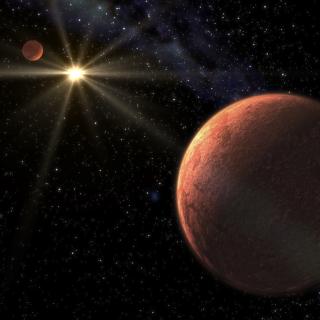Bibcode
Abia, C.; Tabernero, H. M.; Korotin, S. A.; Montes, D.; Marfil, E.; Caballero, J. A.; Straniero, O.; Prantzos, N.; Ribas, I.; Reiners, A.; Quirrenbach, A.; Amado, P. J.; Béjar, V. J. S.; Cortés-Contreras, M.; Dreizler, S.; Henning, Th.; Jeffers, S. V.; Kaminski, A.; Kürster, M.; Lafarga, M.; López-Gallifa, Á.; Morales, J. C.; Nagel, E.; Passegger, V. M.; Pedraz, S.; Rodríguez López, C.; Schweitzer, A.; Zechmeister, M.
Bibliographical reference
Astronomy and Astrophysics
Advertised on:
10
2020
Journal
Citations
30
Refereed citations
24
Description
Due to their ubiquity and very long main-sequence lifetimes, abundance determinations in M dwarfs provide a powerful and alternative tool to GK dwarfs to study the formation and chemical enrichment history of our Galaxy. In this study, abundances of the neutron-capture elements Rb, Sr, and Zr are derived, for the first time, in a sample of nearby M dwarfs. We focus on stars in the metallicity range - 0.5 ≲ [Fe/H] ≲ +0.3, an interval poorly explored for Rb abundances in previous analyses. To do this we use high-resolution, high-signal-to-noise-ratio, optical and near-infrared spectra of 57 M dwarfs observed with CARMENES. The resulting [Sr/Fe] and [Zr/Fe] ratios for most M dwarfs are almost constant at about the solar value, and are identical to those found in GK dwarfs of the same metallicity. However, for Rb we find systematic underabundances ([Rb/Fe] < 0.0) by a factor two on average. Furthermore, a tendency is found for Rb - but not for other heavy elements (Sr, Zr) - to increase with increasing metallicity such that [Rb/Fe] ≳ 0.0 is attained at metallicities higher than solar. These are surprising results, never seen for any other heavy element, and are difficult to understand within the formulation of the s- and r-processes, both contributing sources to the Galactic Rb abundance. We discuss the reliability of these findings for Rb in terms of non-LTE (local thermodynamic equilibrium) effects, stellar activity, or an anomalous Rb abundance in the Solar System, but no explanation is found. We then interpret the full observed [Rb/Fe] versus [Fe/H] trend within the framework of theoretical predictions from state-of-the-art chemical evolution models for heavy elements, but a simple interpretation is not found either. In particular, the possible secondary behaviour of the [Rb/Fe] ratio at super-solar metallicities would require a much larger production of Rb than currently predicted in AGB stars through the s-process without overproducing Sr and Zr.
Related projects

Very Low Mass Stars, Brown Dwarfs and Planets
Our goal is to study the processes that lead to the formation of low mass stars, brown dwarfs and planets and to characterize the physical properties of these objects in various evolutionary stages. Low mass stars and brown dwarfs are likely the most numerous type of objects in our Galaxy but due to their low intrinsic luminosity they are not so
Rafael
Rebolo López

Exoplanets and Astrobiology
The search for life in the universe has been driven by recent discoveries of planets around other stars (known as exoplanets), becoming one of the most active fields in modern astrophysics. The growing number of new exoplanets discovered in recent years and the recent advance on the study of their atmospheres are not only providing new valuable
Enric
Pallé Bago